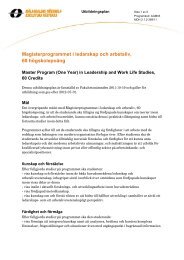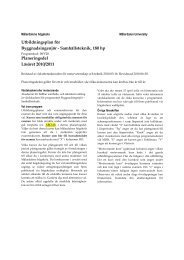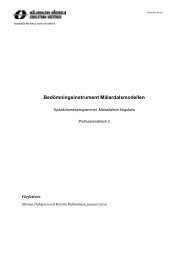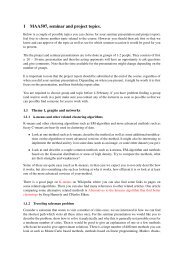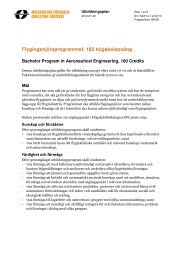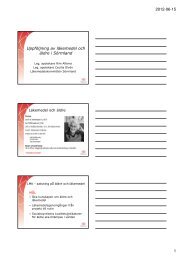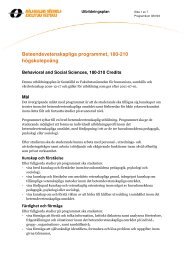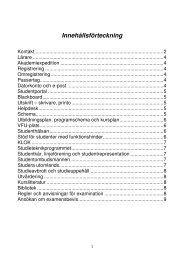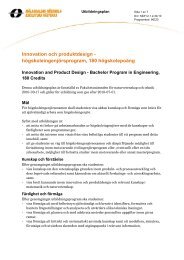Integrating Immigrant Children into Schools in Europe
Integrating Immigrant Children into Schools in Europe
Integrating Immigrant Children into Schools in Europe
Create successful ePaper yourself
Turn your PDF publications into a flip-book with our unique Google optimized e-Paper software.
CHAPTER 5SCHOOL-BASED RECOGNITION OF IMMIGRANT CULTURESupport measures for immigrant pupils have been put <strong>in</strong> place <strong>in</strong> almost all <strong>Europe</strong>an countries, generallyon the basis of a tw<strong>in</strong> strategy. First, the education systems of those countries support acquisition by thepupils concerned of at least one official host country language so that they can <strong>in</strong>tegrate more effectively<strong><strong>in</strong>to</strong> the host society and be educated more easily (see Chapter 4). Secondly, support may also beconcerned with ensur<strong>in</strong>g that the same pupils rema<strong>in</strong> proficient <strong>in</strong> their mother tongue and responsive totheir own cultural heritage so as to ma<strong>in</strong>ta<strong>in</strong> firm contact with their culture of orig<strong>in</strong>. Provision for thislatter type of support will be dealt with <strong>in</strong> the present chapter, which will also consider how schools mayadapt their daily activities <strong>in</strong> response to the cultural or religious practices of immigrant pupils.5.1. Measures to Support the Language and Culture of Orig<strong>in</strong>Mother tongue support is often <strong>in</strong>troduced on the grounds that this will improve the development andlearn<strong>in</strong>g ability of children with a mother tongue different from the language of <strong>in</strong>struction, and alsocement their sense of identity. Support measures enabl<strong>in</strong>g immigrant schoolchildren to be taught theirmother tongue are <strong>in</strong> some cases developed as part of m<strong>in</strong>ority language programmes, put <strong>in</strong> place <strong>in</strong>some countries for specific m<strong>in</strong>ority language groups. The countries have adopted vary<strong>in</strong>g approachesfor the provision and organisation of these measures. The precise implications of different approaches tomother tongue support have been the subject of much ongo<strong>in</strong>g research ( 1 ). The same issue has alsobeen the focus of recent political debate <strong>in</strong> several <strong>Europe</strong>an countries that have decided to earmarksignificantly more resources for immigrant pupils to become fully proficient <strong>in</strong> the language of<strong>in</strong>struction, and less for teach<strong>in</strong>g them their mother tongue. This applies to Denmark, the Netherlandsand Norway.However, as regards measures for teach<strong>in</strong>g immigrant pupils their language of orig<strong>in</strong>, many <strong>Europe</strong>ancountries do <strong>in</strong>deed offer many immigrants such provision. The nature of these measures varies widelyfrom one country to the next. Often support of this k<strong>in</strong>d is available to pupils <strong>in</strong> compulsory educationirrespective of their precise immigrant status, but depend<strong>in</strong>g on which language is their mother tongue.Only <strong>in</strong> Lithuania is there a special arrangement of this k<strong>in</strong>d for immigrants with refugee status, for whomlocally provided teach<strong>in</strong>g of the mother tongue may be funded at central level to promote their social<strong>in</strong>tegration. Sweden is the sole country <strong>in</strong> which all immigrant pupils undergo<strong>in</strong>g compulsory educationare formally entitled to mother tongue tuition if they wish. In other countries, its provision may be l<strong>in</strong>kedto practical considerations such as the presence <strong>in</strong> school of a m<strong>in</strong>imum number of pupils set to benefitor the availability of qualified teachers. Furthermore the existence of a bilateral agreement between thehost country and country of orig<strong>in</strong> may be the basis on which some mother tongue tuition is provided.In many cases, therefore, the provision of support depends on which country pupils or their familiesorig<strong>in</strong>ally come from. This is so, for example, when support is available <strong>in</strong> accordance with CouncilDirective 77/486/EEC, which lays down that appropriate measures should be taken to ensure that( 1 ) See for example: Thomas, W.; Collier, P; Center for Research on Education, Diversity & Excellence. A National Study ofSchool Effectiveness for Language M<strong>in</strong>ority Students’ Long-Term Academic Achievementhttp://www.crede.ucsc.edu/research/llaa/1.1_f<strong>in</strong>al.html 2002 and Cumm<strong>in</strong>s, J. Language, Power, and Pedagogy.Bil<strong>in</strong>gual children <strong>in</strong> the cross-fire. England: Multil<strong>in</strong>gual Matters51



